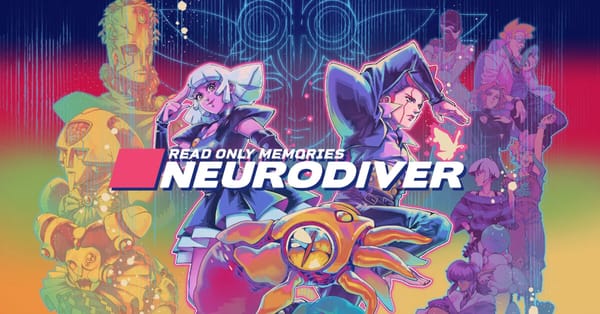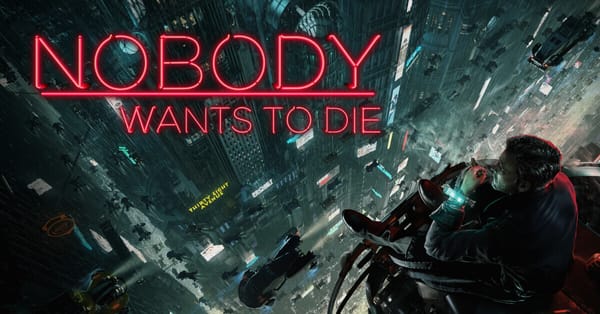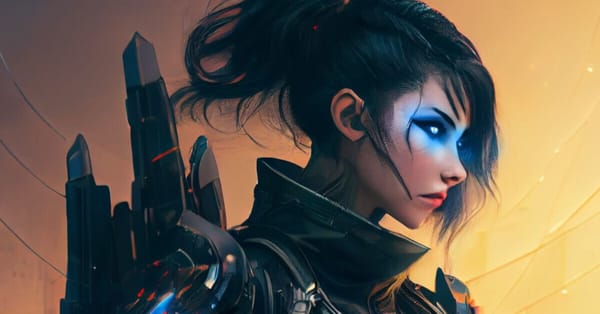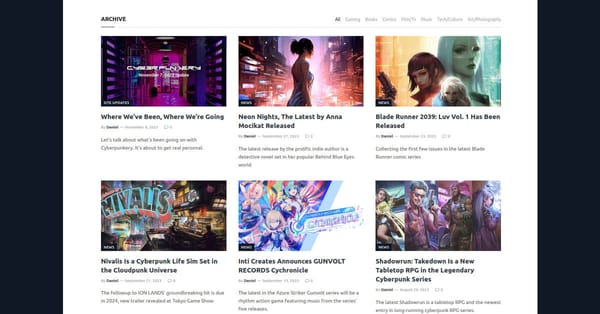Cloudpunk Review
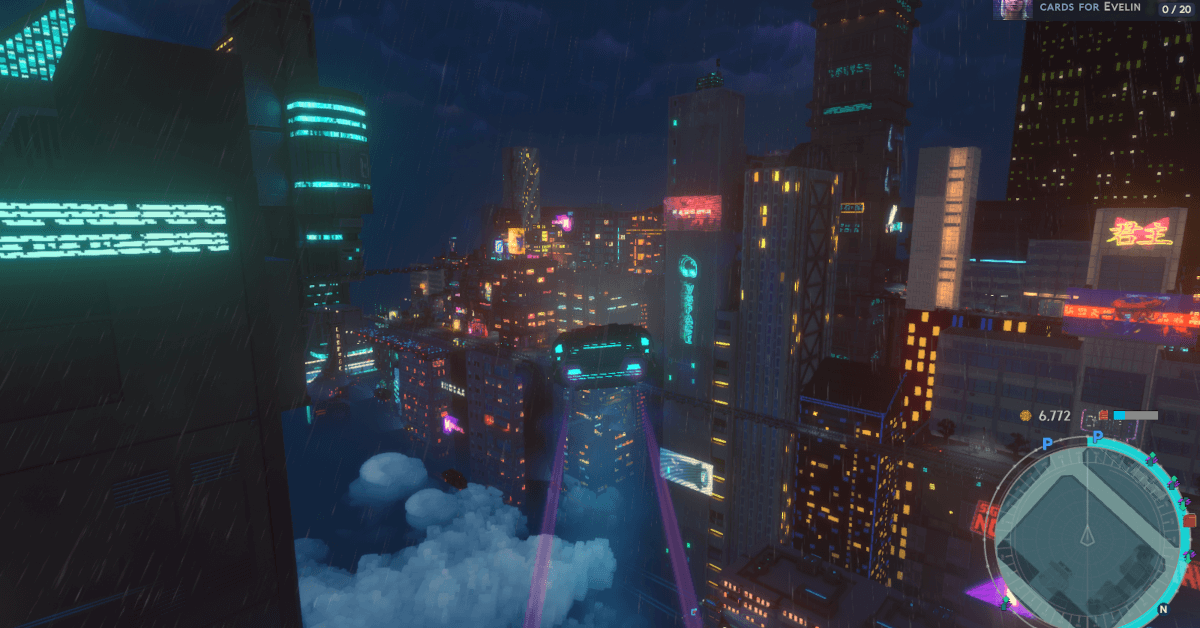
Cloudpunk is a game that had been on my radar for a long time. The game was formally announced back in 2018 by indie developer ION LANDS. It immediately piqued my interest. The idea seemed straightforward at the time. It was like the flying car segments of Blade Runner except you were a UPS-style delivery driver working in a vast cyberpunk city. It was a unique idea that immediately appealed to me. I wanted to fly freely around a huge cyberpunk city with electronic lights glowing in the endless rainfall. I wanted to so badly. So I followed the game’s development for the next two years and became increasingly excited as new details emerged. Then it was finally released in 2020 and I. . .did not get it for another two years. This year. This week in fact.
And now that I have played through it I realize what a fool I’ve been. An absolute fool. A ridiculous, absolute fool. Had I known at the time how much I was going to love this game, I would have purchased it on day one. I shouldn’t have been surprised. I wanted to fly around an endless cyberpunk city in a flying car delivering packages and when I finally could, I delayed. Cloudpunk indeed delivered (heh) the Blade Runner-ish flying car package delivery that it promised for years that it would. But it also turned out to be so much more than I was expecting.

The game wastes no time throwing you into the aforementioned flying car, called a HOVA in-game. You are Rania, a startlingly level-headed woman with a wry sense of humor who has just recently arrived in the city for work in order to pay off debt. Debt is a big deal in this world, by the way. If you are in debt, you are relentlessly pursued by a group called the DebtCorps whose job it is to make your life a living hell until you pay what you owe. They’ll take your home, kidnap your relatives, and do god-knows-what to you if they catch you.
The city Rania has arrived in is called Nivalis and the work she has come to the city to do is to be a delivery driver for a sometimes sketchy delivery company called Cloudpunk. You are given a brief introduction to the city and to Cloudpunk by a mysterious dispatcher known to you only as Control. You eventually learn his real name later on but for most of the game he is simply referred to as “Control.”
You are told to go to Cloudpunk HQ to pick up a package and deliver it to a destination that is given to you by Control. This is the crux of the gameplay in Cloudpunk. At it’s core you are simply delivering packages, and sometimes people from Point-A to Point-B. When Control gives you a job to do, he will place a “nav point” on your map. This is an icon that shows up on your map and shows you where to fly your HOVA to.
The focus of the gameplay is on the flying segments but there are plenty of on-foot areas where you get to exit your HOVA and explore an area by walking around. This is usually when you arrive at a delivery destination. After you find a parking spot, that is (this turned out to be one of the most challenging aspects of this game). The on-foot segments are fun but limited as you don’t interact with the environment much outside of operating switches for elevators, picking up an item from time to time, or interacting with vendors. It’s immediately noticeable how little you can interact with the environment in these scenes and it really says a lot about the design of the setting that I would immediately want to interact more with it.
After you deliver your packages, it’s back in the HOVA for you where you will almost immediately be contacted by Control and given your next mission. There is a lot of playful banter between Raina and Control and it’s a fun little addition that makes the characters more personable. Your other companion while exploring Nivalis is Camus. Camus is an AI assistant who appears as a dog. He helps Rania during her trips through the city and even provides useful guidance her make moral decisions from time to time. Aside from Control, Camus is Raina’s only friend for most of the game.

Not every job you are given is as simple as delivering from Point-A to Point-B. There are some morally questionable delivery requests that pop up from time to time. Cloudpunk as a company doesn’t ask questions, but Rania and Camus certainly do. For example, one of the early packages when picked up is making a strange sound that makes Camus uneasy. When he tells you that he doesn’t like it, a secondary nav point is added to your map and you’re given the option to delivery the package to it’s intended recipient or take it to a trash disposal. As it turns out, the package was a bomb intended to blow up the recipient.
I ended up delivering the package to the intended recipient because I didn’t yet realize right away that I had the option to do something else, despite Camus’ pleading. I felt bad but I made up for it by making future moral decisions more carefully. There is no long term impact of whatever decision you make. It triggers some interesting dialogue between you and Control and between you and Camus. But to have the option to disobey orders and make a decision that you feel is right is a nice touch.
While you are making your deliveries you are meeting various people and speaking with them. As you do this you start to realize that there is an overarching story unfolding. This is where the game surprised me. I knew that I’d be meeting and talking to various people and learning more about them beforehand. But I was not expecting to experience the sort of in-depth story-telling present here.
Rania notices a lot of people in Nivalis use the term CORA in various ways. It’s sometimes as slang, sometimes in the context of something mythical. But sometimes in a literal sense, as though it were a living thing that truly exists. Rania becomes more and more curious the more she hears the term used and begins to investigate what or who CORA is. The city, according to its citizens, is very old. Hundreds, or possibly even thousands of years. No one really knows. The city is treated in many ways as though it’s systems are mythical. No one really knows how the city works, technologically speaking. That information was lost ages ago. They just know that until now it has. But things start going wrong with the city and its various systems and Rania and others believe CORA might be involved.

This aspect of the story gripped me and inspired me to keep playing. I wanted to unlock more of the mystery surrounding CORA. And when the truth was finally revealed, I was not disappointed. This was real cyberpunk novel-worthy stuff.
As good as the story is, the real star of the show here is the city itself. Nivalis is a living city, bustling with endless amounts of people, be they human or android, and other HOVAs flying around the busy “roads” all around the city. Visually, the city is stunning. It consists of hundreds of tiers stacked upon each other and extends over vast distances in all directions. All over you see the electronic light of digital billboards riddled with ads, the lights of noodle shops and apartments. You can navigate your HOVA up and down all these tiers, but not all the way to the towers above the clouds. Those can only be accessed by the ultra-rich. You do access some of these “spires” but only when it involves a delivery job you have to do.
And it’s raining. Constantly. The entirety of the game takes place on Rania’s first night on the job so it’s possible that it’s just a rainy day. But it is never not raining in Nivalis during the game and I have no complaints about that. The city is delightfully atmospheric as a result.
Adding to the atmosphere is the sounds you hear as you walk past various establishments. You’ll hear sirens above you as police HOVAs are chasing someone around in the skies above you. You may hear the thumping of bass as you pass a night club. You’ll hear ads and occasionally news reports. This all adds a sensation of life to the city.
On top of all the background and foreground sounds you hear, there is also the music. Which I would be remiss not to mention. The soundtrack, composed by Harry Critchley, is very good. It’s mostly electronic music in the vein of various styles of synthwave. You have everything from the more ambient atmospheres of Vangelis’ Blade Runner soundtrack to the more pulsing dance-oriented stuff that has risen in popularity over the last few years.
All of this amounts to an extremely fun, addictive game that I had a hard time turning off. I played through almost the entirety of the game in one session and it was over too soon. Which brings me to my second complaint about Cloudpunk. It’s too damn short. When the game was done, I wanted more. It’s like a movie that is so good you wish it wouldn’t end. Fortunately ION LANDS has since released DLC for the game that acts as a full-fledged sequel called City of Ghosts. I’m looking forward to playing that and will tackle it in a separate review sometime in the future.
Cloudpunk is a breezy, fun, and very addictive adventure through a living cyberpunk world that feels real even in spite of it’s voxel-style graphics. A little more interactivity with the on-foot segment would have made this a near perfect experience. It’s a game that I will likely replay time and time again forever. I love being in the city of Nivalis. I’d live there if I could.

